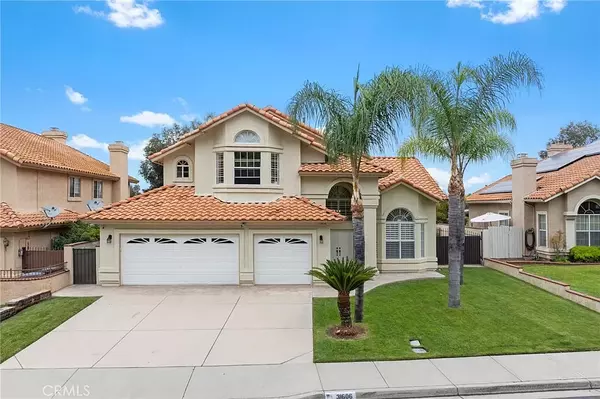
Simple Solutions for Down Payment Saving
The thought of putting thousands of dollars into a down payment for a home might bring out a lot of emotions: fear, dread, anxiety. Does any of that ring a bell? Saving for a down payment is no easy task, but it is totally achievable with the right mindset and strategy. Implement some of these tips into your budget, and you’re guaranteed to see a steady uptick in your savings—enough to finally get the home you’ve been dreaming of. Know where you stand. First things first, take a realistic look at your finances with your mortgage lender to determine what type of loan you qualify for and exactly how much money you’ll need to put down. This can give you a more accurate picture of the time frame you’ll have to hit your savings goals. Automate your savings (and don’t touch them). By contributing to an automated savings account weekly, monthly, bi-monthly, etc., you are making the process of saving quite literally, a no brainer. When some of your money is instantly transferred into your savings account without having to remember to do it (or not do it) yourself, you’re much more likely to save and refrain from dipping into the account unnecessarily. Expect the unexpected. Life happens, and during the process of saving you are bound to run into a few bumps in the road—that’s OK. As long as you are prepared to make up the difference along the line, there’s no reason to let these snags ruin your chances at your new house. Avoid unnecessary expenses. We don’t need to tell you that daily coffee runs add up over time. Five dollars might not seem like a lot of money, but over the course of a week and a month, that adds up to a significant portion of your spending. Think critically about expenses you can realistically do without for the time being, and seriously consider phasing them out of your budget. Reevaluate your credit and credit cards. If you have a credit card you use regularly with a significant interest rate, this could put a major stop to your savings. Try to pay off these cards as quickly and efficiently as possible so that they don’t negatively impact your credit or ability to save long-term.

How to Keep Home Improvements From Demolishing Your Budget
How to Keep Home Improvements From Demolishing Your Budget Owning a home can be expensive, and monthly costs can be volatile. You can prepare for your mortgage payment, but if a leaky roof catches you off guard, your entire budget could be thrown out of whack. About 3 in 10 homeowners (31%) don’t have money set aside for home repairs and improvements, according to an article in NerdWallet. Considering Americans spent $449.5 billion on home repair and improvement projects in the most recent two-year period, according to the U.S. Census, having some money set aside is a good first step. “It feels great to have cash on hand to pay for home improvements,” says NerdWallet home expert Holden Lewis. “But there are other ways to pay for home improvements and ways to ease the stress of an already stressful time.” » MORE: Calculate the cost of your home improvement project 1. Always have a plan A homeowner’s to-do list is never complete, but keeping a running tally is imperative. Keep track of your regular maintenance schedule, such as furnace filter replacements and gutter cleaning; the priority projects that you’d like to get done soon, like fixing a drafty window or an exterior door that sticks; and the major updates you’d like to do eventually, such as replacing your kitchen cabinets or adding a new bathroom. Whether you use a pencil and notebook or an Excel spreadsheet, add a date as you complete each item. Not only are you less likely to forget regular upkeep when you have a way of keeping track, but you can more easily prioritize the things that will save you from major repairs down the road, and your budget will thank you for it. Also, use your list as a sort of inventory of all the work you do, including the unexpected repairs that are bound to come up. You’ll appreciate this log in years to come when, for example, you realize you’re about to repair your air conditioner for the fifth summer in a row, and maybe it would be savvier to replace it. Tracking your projects is also useful when it comes time to sell. It’s much easier to pinpoint what year you put on a new roof when you have the records all in one place, and the new owners will appreciate knowing the work you put in over the years. 2. Add to your emergency fund It’s a good idea for everyone to have money set aside for home repairs, but especially those not living in a brand-new home. Unexpected repairs will come up: 44% of Americans who have ever purchased a home said their first unexpected home repair occurred within the first year of owning — 12% within the first month. In general, an emergency fund is designed to catch all of life’s unexpected expenses or to cover regular expenses if you lose income. Adding an extra cushion can help pay for surprise home repairs without touching your primary safety net. Do what you can — try to set aside $100, to start. Once you have that, aim for $500, and so on. Including an extra few hundred dollars for your home will be enough to get your locks changed if you lose a key, to fix a leaky pipe, or patch a small roof leak — the little things that you don’t want to put off until your next payday or windfall. 3. Act quickly when it comes to repairs When a repair pops up, tend to it. Just 55% of Americans would handle a repair right away, according to the report, and 9% of millennials would wait until the problem started causing damage. What begins as a minor issue can turn into a very expensive disaster if you put it off. A leaky pipe under the sink could eventually lead to a rotten subfloor, for example, boosting the cost of your problem exponentially. 4. Know your financing options Have a plan in place should your home need major work or a big renovation project — things that your emergency fund or savings may not cover. More than half of homeowners (56%) say they would consider borrowing money from a lender or family member, for example, to pay for home repairs and improvements that would increase the value of their home. Home equity loans and home equity lines of credit (HELOCs) are also solid financing options. Knowing your home’s value is a good starting point for either of these, because the amount you’re allowed to borrow is based on market value minus how much you still owe on your mortgage, or your equity. 5. Consider doing it yourself Homeowners under age 35 DIY their home repairs and improvements more than they hire professionals, and more than all other age groups, according to the NerdWallet report. As such, they’re spending less, several hundred less, on a typical project. It’s true, DIY projects generally cost less than hiring a professional — you aren’t paying for labor. However, screwing up a DIY project — as 43% of homeowners admit to doing at least once — can wind up costing you more to fix. Make sure to choose DIY projects within your skill set or those that can be easily learned and easily fixed, should they go wrong. » MORE: 4 questions to ask before you DIY 6. If you go pro, do your research If the project is outside of your abilities or you’d just rather pay for professional-grade work, be vigilant. Get at least a few estimates and ask questions — how they intend to do the job, what the estimated timeline is, whether they’re insured and how much experience they have with projects like yours, for example. Don’t simply go with the cheapest guy to save a few bucks — he could be the best person for the job, or you may wind up spending more to fix his screw-ups. Professionals should always come out to inspect the job in person, so don’t agree to hire someone over the phone or online. “Home repairs are inevitable, and you’ll surely want to do renovations, even if they’re as simple as painting a bathroom,” Lewis says. “Before the work begins, you’ll feel less stress if you know where the money will come from.”

A Spotlight on Our Great Temecula Area Parks
Escape the Temecula and Murrieta rush by visiting a local park. Did you know that Temecula and Murrieta have over 100 parks in the area for everyone to enjoy? It’s true. In fact, there are parks designed with different visitors in mind, including bikers and hikers, dogs, and kids. Our recreational spaces are beautiful places for not only leisure but also for education and culture. To learn more about these great spaces, watch my short video.

A Message from Shark Tank’s Barbara Corcoran
“When homes are selling fast, who can ensure you’ll get the most money for yours? I’m Barbara Corcoran, and I’ve managed agents who have sold homes for thousands of dollars over list price. The key is to hire an agent with a smart, aggressive marketing plan. In Temecula and Murrieta, no agent sells more homes than Goran and Lisa Forss. They can even put an immediate cash offer on your home to make sure your home sells faster and for more money. Go to soldintemecula.com and get top dollar for YOUR home!” Team Forss is proud to be recommended by real estate guru and mentor, Barbara Corcoran! We have always been honored to serve the Temecula Valley as our team and their families live, work and thrive in this amazing community. We use our insight and marketing strategies to help our buyers and sellers make sound, educated decisions before they make their move and this has led us to sell over 500+ homes this year alone, averaging a home sold every 17 hours. We have exclusive programs for both our buyers AND our sellers to ensure that we help you in the best way possible. Reach out to TEAM FORSS and let us help you on your home adventure TODAY!
Categories
Recent Posts










